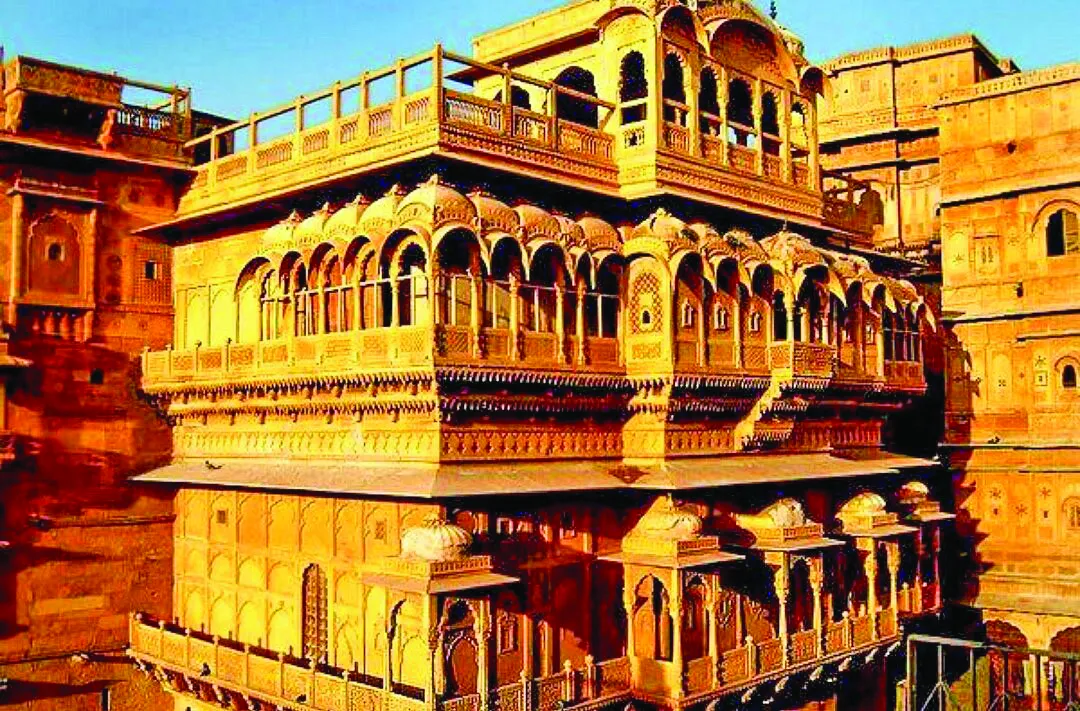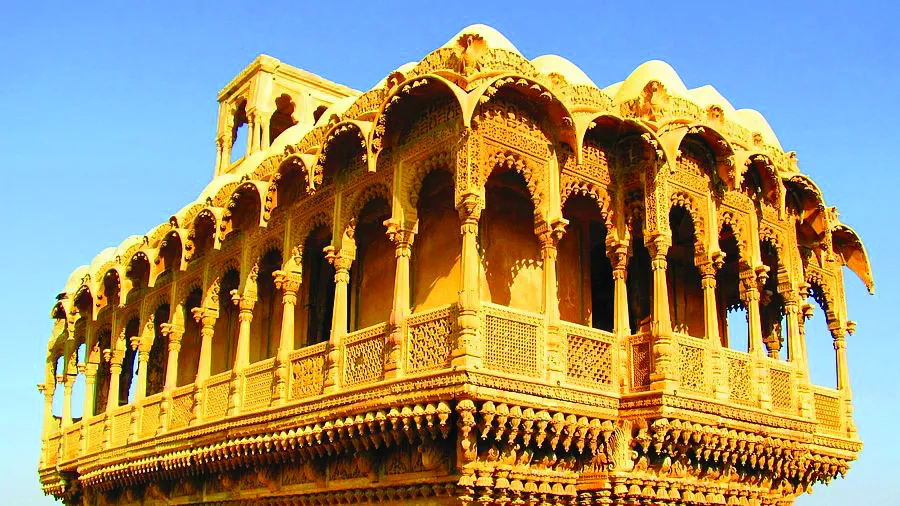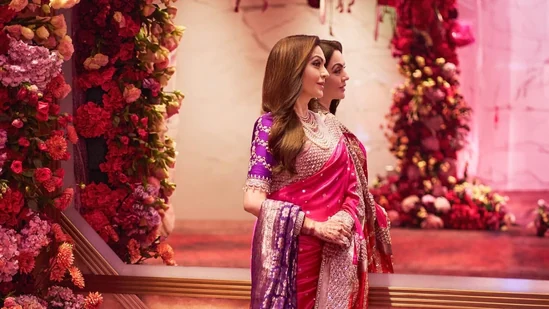They say that the journey to heaven is beautiful and Rohet—a little village on the outskirts of Jodhpur—is nothing short of a design heaven. A visual treat for the design addicts who love the touch of tradition spiced with dollops of heritage.
Rohet is a few miles of drive away from the bustling blue city of Jodhpur. You drive down a fast-moving highway, turn into a dusty village road and come face to face with the majestic gates of Rohet Garh, its arched frescoed gates leading you into a typical haveli that has well-manicured garden at its heart and long winding corridors all around.
A heritage hotel and the home to the Thakurs of Rohet, the haveli begins with beautiful alcoves that house well-defined suites for the family, flanked by airy courtyards, galleries and a temple. “This is home to the family deity,” informs a very warm, handsome and tall Thakur Siddharth Singh, the master of this manor and also the direct descendent of this Jagir that was awarded in 1622 to his ancestor Thakur Dalpat Singh I. It was a reward for unparalleled bravery in numerous battle campaigns under the Rathore banner. Legend has it that the brave warrior had 84 wounds on his body, and thus, the then Maharajah of Jodhpur, Marwar, bestowed upon him, a Jagir of 84 villages.


We meet Thakurani Rashmi Singh and the young scions, Jahnvi Kumari, studying design at Shristi College, Bengaluru, and son Avijit Singh, a hotelier, in their tastefully done living room. Carved corners, elegant niches and a generous array of silver cover this room, bedecked with vintage furniture.
A much-awarded heritage hotel, part of which remains a home to the noble family, the Garh, situated on the banks of a lake and set in the midst of rural surroundings is a haven of peace and tranquility. “A virtue that has drawn writers from around the world, Bruce Chatwin and William Dalrymple practically lived at Rohet Garh for 4-5 months working on their respective books—The Song-lines and City of Djinns,” informs Avijit. Opened to guests in 1990, by grandfather Thakur Manvendra Singhji, the Garh has been very carefully renovated by Rashmi who ensured that no new building was added in the renovation process, but rather, old edifices have been skilfully redesigned to keep its original structure.
Sprawling lawns and manicured gardens, which invite a multitude of birds and dancing peacocks, mark this oasis where the bird song is the only sound you will hear. The hotel once also had superstar singer Madonna spending a long vacation here. Guests to the property are treated with a peak into a ‘village way of life’. As well as a close look at the Marwari horses that fill Siddharth’s stables.
A driving distance from the Garh is Mihirgarh, a sun fort that is a wonderment. Built as it is, from scratch, using all local materials and skills. Reliving the making, Siddharth recalls, “One afternoon I stumbled upon a treasure. ‘Mali Nathji ka Dhora’, the sacred dune dedicated to the Warrior God Hero of Marwar, was a place of breathtaking beauty. Sprinkled with historical importance and mythology, this dune seemed to speak to me. Many happy days passed by as I sat there, mesmerized, watching the perfectly choreographed dance of the shrubs and the gentle desert winds. When I would head home, a wondering would accompany me— how do I share this precious gift with others?”
He further adds, “One of those evenings when Rashmi, my wife (and soul mate), and I were standing at the dune and soaking in the splendid sunset, inspiration struck.The image, so undefined until then, started becoming clear. Wide strokes and clean architectural lines seemed to make their presence prominent in our minds. Mihir Garh, the Fort of the Sun, was conceived that day. Guided by intuition, rather than reason; inspired by emotions, rather than rationale, bit by bit we gave our dream a form. More than a hundred carpenters, craftsmen and artisans from the region have worked tirelessly along with us, over two years to make our dream a reality. Harsh summers have not stopped them from creating a fort par excellence.”
“We visualised and they realised—every nook and corner of Mihir Garh was taken care of together. Rashmi has personally designed everything from the colour schemes and combinations to the last doorknob and curtain holder. In 2009, when Mihir Garh was completed, we realised that with the help of our very talented team we had achieved something very special… A haven where the glorious past rubs shoulders with the contemporary chic, to give you the experience of a lifetime.”
This fort holds nine magnificent suites. Each one is more than 1,700 sq ft of pure luxury. Private jacuzzi or plunge pools with each suite redefine the word indulgence. Numerous alcoves, lounges and common areas commanding spectacular views have been designed to experience intimacy with yourself and another. The construction of the majestic Mihirgarh, the restoration of Rohet Garh and the refurbishment of Rohet House convinced Rashmi and Jahnvi to float a décor, design firm, ‘A Matter of Space’, which will take up restoration projects. Jahnvi shares, “I saw my parents recreate Mihirgarh simply out of their brilliant vision. All through my course where I studied design, I thought how special it was to create a space with indigenous materials. I realized that what I would love to do most is recreate old properties, bringing them back to their original glory.” The Rohet House is a standing testimony to that skill.
The Rohet House is the family home in Jodhpur. Spread across 14,000 sq ft, this private property has been lovingly developed into a luxury residence featuring six suites and two rooms, a spectacular swimming pool, a beautifully appointed plush dining room, inviting lounges and verandas and a lush garden. Each corner redone by Rashmi to reflect the richness of Jodhpur, its brilliant frescoes, its handmade textiles and its rich tradition of carved and enamelled furniture that always takes her breath away. Above all, it reflects this noble family’s highly evolved sensibility, further honed with history and heritage.






